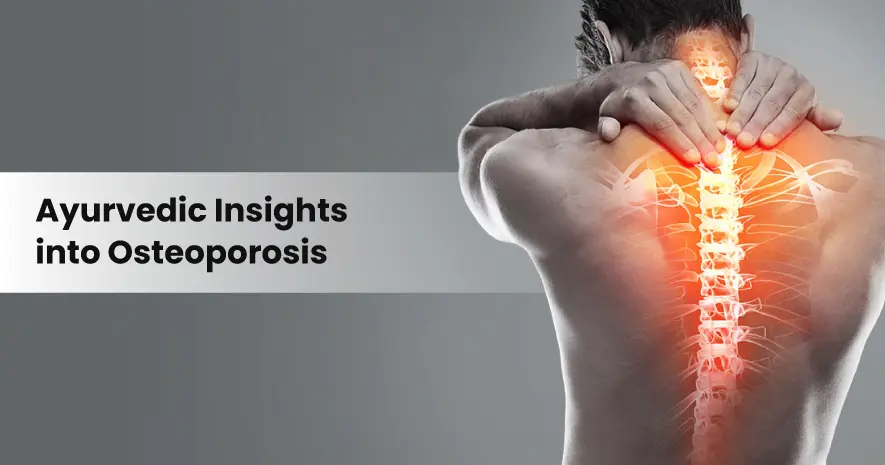
Osteoporosis is a progressive skeletal disorder characterized by a decrease in bone density and microarchitectural deterioration, leading to increased bone fragility and a heightened risk of fractures. Often referred to as the "silent disease," it typically progresses without overt symptoms until a fracture occurs, usually in the hip, wrist, or spine. Epidemiological data indicate that osteoporotic fractures in women surpass the combined incidence of cardiovascular events such as myocardial infarction and stroke, underscoring the clinical significance of early intervention and preventive strategies.
From the Ayurvedic standpoint, this condition aligns with the concepts of Vata Dosha aggravation and Asthi Dhatu Kshaya—the degeneration or depletion of the bone tissue (Asthi Dhatu). Ayurveda, which emphasizes the maintenance of homeostasis through the balance of Doshas (bioenergies) and Dhatus (tissues), views bone loss as a consequence of an internal disharmony, particularly involving an unregulated increase in Vata Dosha, which is dry, light, and mobile in nature, and inherently linked to degenerative processes.
By embracing a multidimensional management protocol comprising Shamana (palliative), Shodhana (cleansing), Rasayana (rejuvenation) therapies, as well as dietary and lifestyle modifications, Ayurveda provides a time-tested, natural framework to support bone integrity, improve metabolic function, and enhance musculoskeletal resilience over time.
Etiopathogenesis: What Causes Osteoporosis?
Osteoporosis arises due to a multitude of interrelated factors, many of which can be explained through both biomedical and Ayurvedic paradigms.
1. Inadequate Calcium and Vitamin D Intake:
Calcium serves as the fundamental mineral for bone matrix formation, while Vitamin D facilitates its optimal absorption from the gastrointestinal tract. A deficiency in either disrupts normal osteoblastic activity and impairs bone remodeling. In Ayurveda, this would be interpreted as Agnimandya (poor digestion and absorption), ultimately affecting Asthi Dhatu Poshana (nourishment of bone tissue).
2. Aging and Bone Resorption:
With advancing age, particularly after the mid-thirties, the process of bone resorption surpasses bone formation. The decline in anabolic hormonal activity accelerates the depletion of bone mass. Ayurveda considers aging a natural Vata-predominant stage of life, wherein dryness and tissue catabolism increase, predisposing the individual to bone degeneration.
3. Hormonal Imbalances:
In women, menopause marks a dramatic drop in estrogen—a hormone critical for calcium metabolism and bone density maintenance. In Ayurvedic gynecology, this decline is associated with the derangement of Rakta and Shukra Dhatu, indirectly influencing Asthi Dhatu as per the Dhatu Parinama (tissue transformation) sequence.
4. Lifestyle Factors:
Nutritional deficiencies, sedentary behavior, smoking, excessive alcohol intake, and chronic use of medications such as corticosteroids adversely affect bone metabolism. These habits amplify Vata and introduce Ama (metabolic toxins) into the body, leading to poor tissue regeneration and systemic debility.
Clinical Features of Osteoporosis
Osteoporosis remains asymptomatic until advanced stages, but subtle warning signs can be observed upon close examination.
- Brittle Nails: A clinical marker suggesting underlying deficiencies in calcium and collagen synthesis, reflecting poor Asthi and Majja Dhatu status.
- Weakened Grip Strength: Linked to diminished muscle and bone integrity, often an early predictor of frailty.
- Receding Gums: Bone loss in the jaw reflects the systemic nature of osteoporosis and is associated with chronic Rakta and Asthi Dushti.
- Chronic Low Back Pain: Often due to micro-fractures or vertebral compression, manifesting with restricted mobility and localized tenderness.
- Loss of Height and Stooped Posture: Caused by compression fractures of the spinal vertebrae, often progressing silently.
- Pathological Fractures: In advanced osteoporosis, even minor trauma can result in fractures, particularly of the hip and spine.
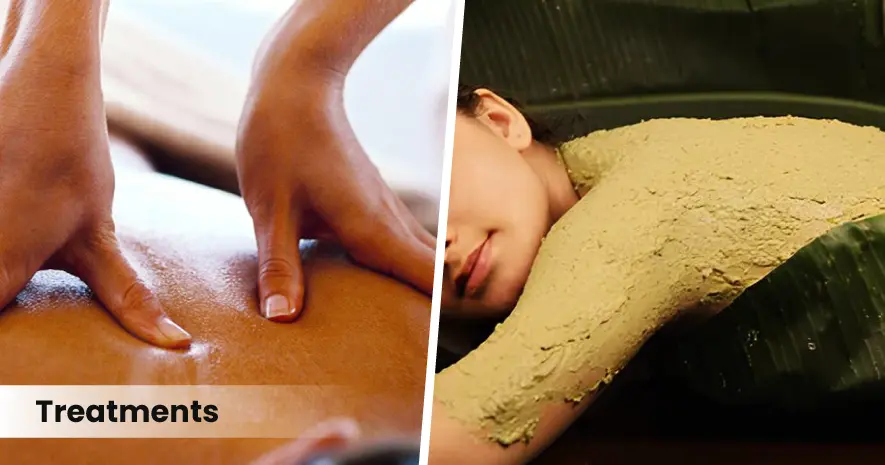
Ayurvedic Management of Osteoporosis
Ayurveda approaches osteoporosis through a comprehensive therapeutic framework that involves correcting doshic imbalance, strengthening the digestive fire (Agni), detoxifying the tissues, and nourishing the bone matrix.
Shamana Chikitsa (Palliative Therapies)
This line of treatment seeks to pacify the vitiated Vata Dosha and rejuvenate Asthi Dhatu. External therapies include:
- Abhyanga (medicated oil massage): Helps in improving blood circulation and reducing stiffness.
- Lepanam (herbal paste application): Reduces localized pain and swelling.
- Taila or Kashaya Dhara: Medicated oil or decoction poured rhythmically over the body to reduce Vata-induced dryness and degeneration.
- Kabala and Gandusha (oil pulling): Enhances oral and systemic health through absorption via the oral mucosa.
Internal remedies focus on:
- Ghrita Pana (medicated ghee intake): Enhances tissue lubrication and absorption of minerals.
- Vasti Therapy: Administration of medicated oil or decoction via rectal route; particularly effective in Vata disorders. Bone-strengthening Rasayana Basti is often prescribed.
- Rasayana Chikitsa: Use of rejuvenative formulations that promote regeneration and enhance Ojas (vitality).
Herbal Interventions with Osteoprotective Potential
Several Ayurvedic herbs exhibit evidence-based osteoanabolic, anti-inflammatory, and adaptogenic properties:
- Ashwagandha (Withania somnifera): A Rasayana known for reducing cortisol, strengthening musculoskeletal tissues, and promoting calcium retention.
- Arjuna (Terminalia arjuna): Rich in bioavailable calcium and co-factors, supports bone mineralization and cardiac function.
- Asthishrunkhala (Cissus quadrangularis): Promotes fracture healing and enhances osteoblast activity by increasing calcium and sulphur uptake.
- Guduchi (Tinospora cordifolia): Stimulates osteogenic differentiation and modulates immune responses, reducing inflammation-induced bone loss.
- Shigru (Moringa oleifera): Demonstrates significant potential to stimulate osteoblasts and increase bone mass density.
- Tila (Sesamum indicum): A nutrient-dense seed rich in calcium, magnesium, phosphorus, and iron, ideal for daily consumption to nourish Asthi Dhatu.
Dietary and Lifestyle Interventions
Diet plays a pivotal role in managing osteoporosis, as per both Ayurvedic and contemporary nutritional sciences. Foods that support Asthi Dhatu formation include:
- Calcium-rich whole foods: Such as dairy products, leafy greens (spinach, amaranth), sesame seeds, and almonds.
- Vitamin D sources: Including sunlight exposure and foods like fortified milk or mushrooms.
- Balanced meals: Easy-to-digest, warm, nourishing foods that enhance Agni and promote tissue transformation.
- Rasa-enhancing herbs: Such as Amalaki and Bala, which indirectly nourish Asthi through improved Rasa Dhatu quality.
From a lifestyle perspective, regular weight-bearing exercises like walking or yoga (particularly Vrikshasana, Trikonasana, and Bhujangasana) help in maintaining bone strength and improving postural alignment. Daily oil massage (Abhyanga) with medicated oils such as Bala Taila or Dhanwantaram Taila maintains joint flexibility and counters Vata-induced dryness.
Exposure to early morning sunlight facilitates natural Vitamin D synthesis, and stress management through meditation and pranayama prevents hormonal imbalances that could exacerbate bone resorption.
Osteoporosis, though often silent in its early stages, can significantly compromise quality of life when left unchecked. Early recognition, preventive care, and a sustained approach to strengthening bones are essential. Ayurveda offers a robust and multidimensional model for understanding and managing osteoporosis—one that emphasizes doshic balance, tissue rejuvenation, mindful living, and diet-based healing.
FAQ
1. Why is Osteoporosis called a "silent disease"?
It typically progresses without noticeable symptoms until a fracture occurs. Subtle early signs like brittle nails or chronic back pain may be overlooked.
2. How does Ayurveda interpret Osteoporosis?
In Ayurveda, osteoporosis aligns with Vata Dosha aggravation and Asthi Dhatu Kshaya (degeneration of bone tissue). It is considered a condition resulting from internal imbalance, primarily due to elevated Vata.
3. What are the main causes of Osteoporosis according to Ayurveda and modern science?
- Calcium and Vitamin D deficiency
- Aging and increased bone resorption
- Hormonal imbalances, especially post-menopause
- Poor lifestyle choices like smoking, sedentary behavior, and alcohol use
- Agni Mandya (poor digestion) and Ama accumulation (toxin buildup) from an Ayurvedic view
4. What are the early warning signs of Osteoporosis?
- Brittle nails
- Weak grip strength
- Receding gums
- Chronic low back pain
- Loss of height or stooped posture
- Unexpected fractures from minor trauma
5. What foods support bone health in Ayurveda?
- Calcium-rich foods: Dairy, sesame seeds, leafy greens
- Vitamin D sources: Sunlight, fortified foods, mushrooms
- Warm, nourishing meals that boost digestion (Agni)
- Herbs like Amalaki and Bala to nourish deeper tissues
6. Can Osteoporosis be prevented or reversed in Ayurveda?
While complete reversal may not be possible in advanced cases, Ayurveda emphasizes early intervention, dosha balance, digestion improvement, and sustained lifestyle practices to prevent progression and improve bone integrity.

October 27, 2025

October 24, 2025
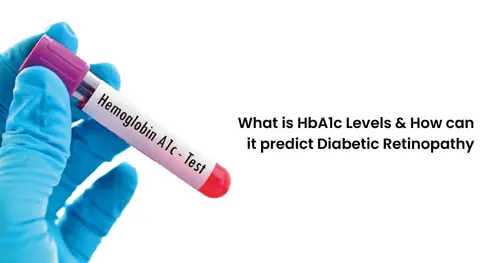
October 18, 2025

October 14, 2025
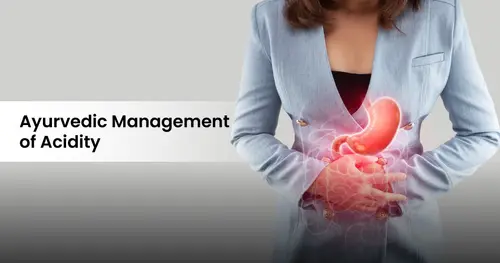
October 10, 2025
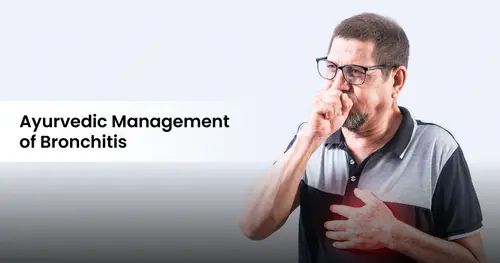
September 25, 2025
We use cookies that are necessary for the smooth operation of the website, to improve our website and to display advertising relevant to you on social media platforms and partner websites. By clicking "Accept all", you agree to the use of cookies for convenience features and statistics and tracking. You can change these settings again at any time. If you do not agree, we will limit ourselves to technically necessary cookies. For more information, please see our privacy policy .